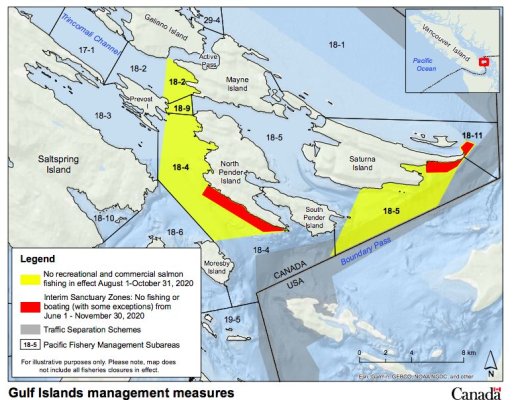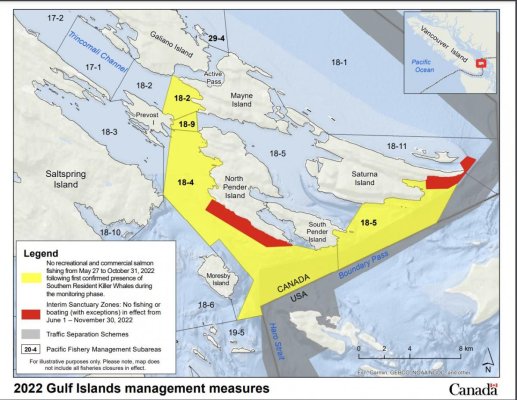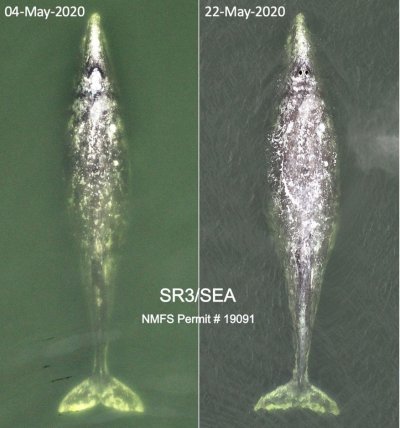There are many different topics within this broad main topic and before we can get into any of them we need to understand the differences between the two killer whale ecotypes in the area; mammal eaters and fish eaters. The mammal eating Bigg’s transients are roamers which can and often do, travel 100 miles in a day, in the waters between AK and CA. Fish eating residents, as the name implies, are stay-at-homes.
I the case of the southern residents (SRKW) they confine themselves to the areas of Active Pass, Rosario, Haro and Boundary Pass. Until 2015, when they began to leave the area, their movements were very predictable, daily, from April until October. The northern residents (NRKW) practice the same behavior in Johnstone Strait, July through September. The sanctuaries mentioned in Johnstone Strait are not foraging areas. Those spots have rubbing beaches where the animals enjoy relaxing social time; a practice only done by the NRKW and no other killer whale ecotype on the planet. When the NRKW go on an annual road trip south, they visit a couple of rubbing beaches on the Sunshine coast.
As mentioned, the overall regulations deal primarily with all whales, while the exclusionary areas are in place to protect the (currently) 73 endangered SRKW.
The two Gulf Islands exclusionary areas are not there just because any whales might be present or pass through. They are sensitive ecological areas which the SRKW have used as a sanctuary throughout their existence. It is a place where they congregate to not only forage, but to attend the day spa, where they take part in “kelping.”
The whale exclusion zones, in reality, should cross the border…
That is an issue best taken up with NOAA and there is an argument to be made for a similar exclusionary area on the west side of San Juan Island. This is an area where the SRKW, when present can spend hours on end, sometimes for days, doing what is referred to as the west side shuffle; back and forth near shore, between Snug Harbor and Eagle Point.
Hopefully the Orcas will develop a stronger taste for sea lions with the ever dwindling salmon stocks.
To be just as overly simplistic, this would take a more drastic shift than getting a vegan to switch to exclusively eating dogs.
The SRKW for 12 million years have thrived on a primary diet of chinook salmon and secondarily chum. It would take generations of change which in the end would not likely include seals and other mammals. If at all possible they might transition to expanded fish diets such as their NRKW close cousins, or to squid and sharks, which their offshore distant cousins eat.
The SRKW don’t have the physical capability to hunt marine mammals like seals, sea lions, porpoises, and other whales.
Southern residents have smaller, less robust, and dense teeth compared to their mammal-hunting cousins, the Bigg’s Killer Whales. They also evolved to have lighter jawbones suited for biting fish rather than chomping on the bones of marine mammals.
But hope is not entirely lost. There is new evidence that the Southern residents may be trying other fish on the menu that they previously have not been recorded eating. In the past few years, scientists have found the Southern Residents are dining on species such as coho salmon, halibut, and Sablefish.
Coho are much smaller and more agile than chinook, so the Southern residents are spending more energy trying to catch them than they would when they hunt Chinook. Halibut and Sablefish are deep-water species and killer whales are not famous for their diving abilities compared to other types of whales.
Every species of fish behaves differently, so the Southern residents would need to learn different techniques to catch them.
…but the transient pods have been seen going after the bigger species, including Sea Lions and even Humpback Whales.
A recent necropsy of a transient killer whale revealed a seal, sea lion and dolphin in the stomach.
Wait for it…
https://youtu.be/G7WGIH35JBE


